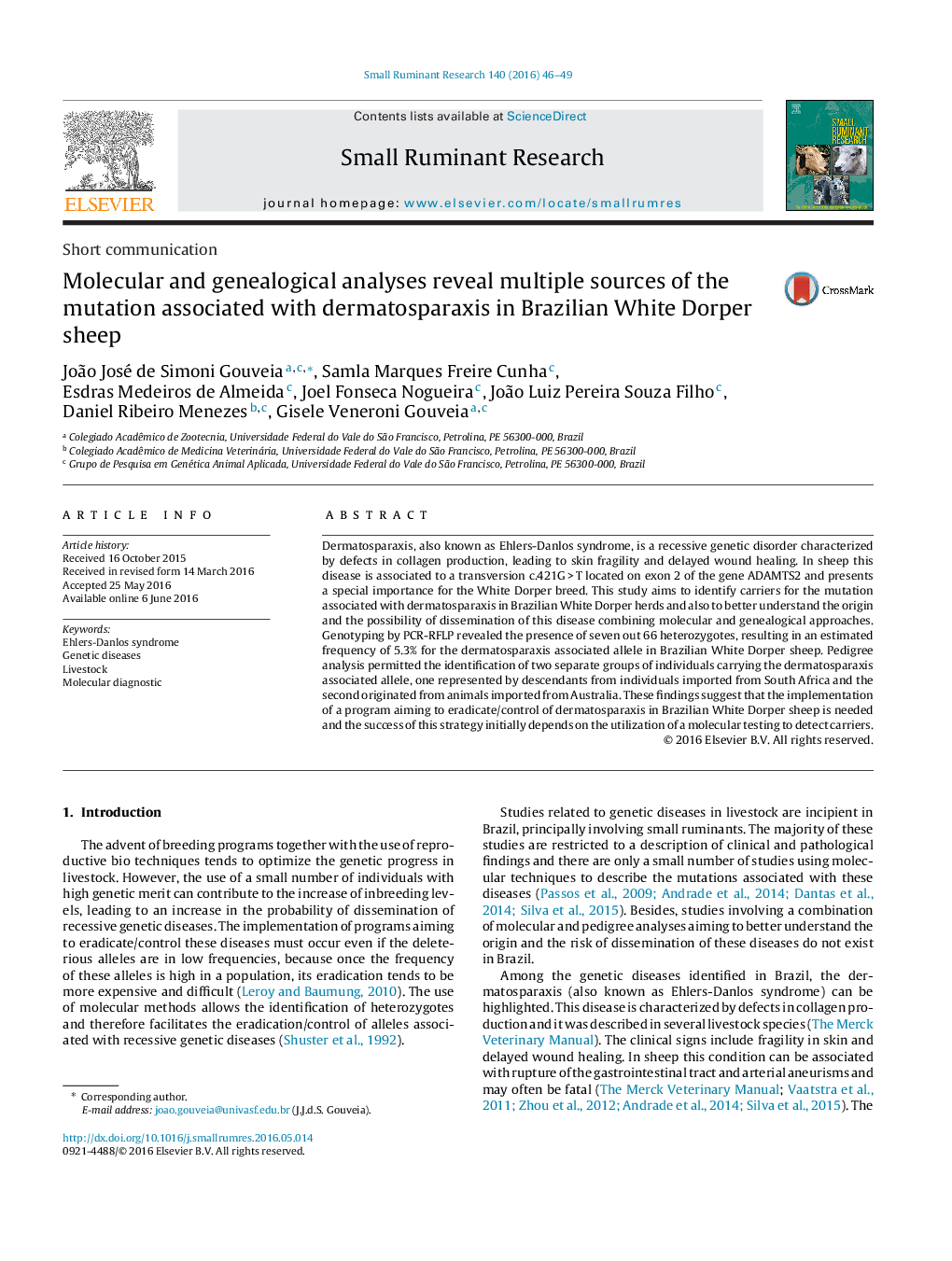| Article ID | Journal | Published Year | Pages | File Type |
|---|---|---|---|---|
| 2456649 | Small Ruminant Research | 2016 | 4 Pages |
•In this study we described the presence of Brazilian White Dorper individuals carrying the dermatosparaxis associated allele.•The heterozygote animals are descendant from individuals imported both from Australia and from South Africa.•The implementation of a program aiming to eradicate/control of dermatosparaxis in Brazilian White Dorper sheep is needed.•The success of the program depends initially on the utilization of a molecular testing to detect carriers.
Dermatosparaxis, also known as Ehlers-Danlos syndrome, is a recessive genetic disorder characterized by defects in collagen production, leading to skin fragility and delayed wound healing. In sheep this disease is associated to a transversion c.421G > T located on exon 2 of the gene ADAMTS2 and presents a special importance for the White Dorper breed. This study aims to identify carriers for the mutation associated with dermatosparaxis in Brazilian White Dorper herds and also to better understand the origin and the possibility of dissemination of this disease combining molecular and genealogical approaches. Genotyping by PCR-RFLP revealed the presence of seven out 66 heterozygotes, resulting in an estimated frequency of 5.3% for the dermatosparaxis associated allele in Brazilian White Dorper sheep. Pedigree analysis permitted the identification of two separate groups of individuals carrying the dermatosparaxis associated allele, one represented by descendants from individuals imported from South Africa and the second originated from animals imported from Australia. These findings suggest that the implementation of a program aiming to eradicate/control of dermatosparaxis in Brazilian White Dorper sheep is needed and the success of this strategy initially depends on the utilization of a molecular testing to detect carriers.
